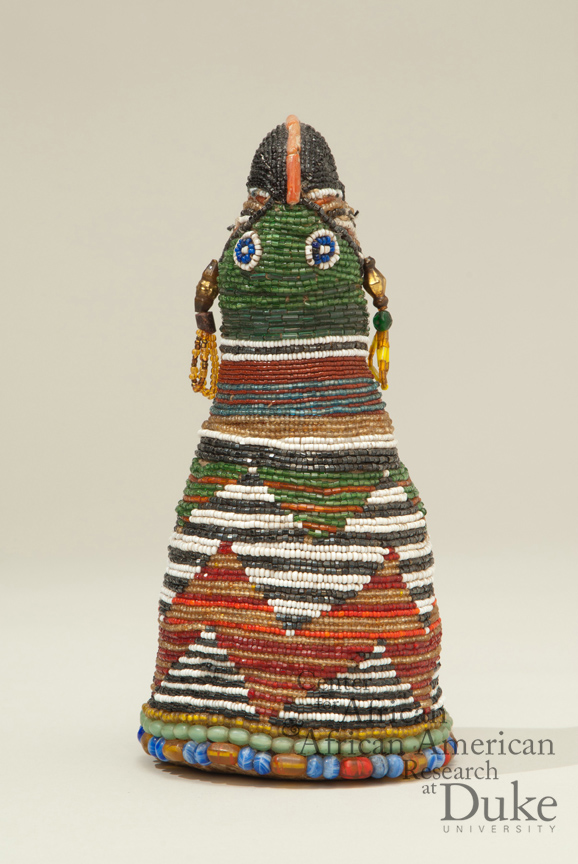



20 cm x 10 xm
(centimeters)
8 in x 4 in
(inches)
Although I first thought this empowered object was the embodiment of an especially wealthy person’s orí (that is, “head,” or destiny), Iya Ọ̀shun tells me that it is a doll of the sort possessed and venerated by a female ẹ̀gbẹ̀ji, or chief herbalist and chief priest of the god of herbal healing, Ọ̀sayìn.
The femaleness of the head suggests that the owner for whom it was made was female, while richness and diversity of the beads demonstrate its owner’s high priestly status.
Ms. Talabi Adedoyin Faniyi, chief priestes of Ọ̀shun in the city of Òshogbo says that the elaborateness of the bead arrangement establishes the importance and high value of the object.
Matory adds that the sheer magnitude of variety in these beads could be understood as a display of wealth. Because specific regions produce only specific beads, the owner of this head of house would need to have access to and clout in a many different cultural contexts to obtain the beads necessitated by an object like this. In addition to being a display of wealth, the general power of the glass beads is a testament to craftsmanship and detail in honor of the gods. The small beads and intricate patterns show a level of meticulous care. These beads are also a gift from the Orishas, specifically beads come Olokun, a deity associated with the sea. This sea association is interesting because it again hints at the owner’s access to social and economic connections with distant places. Because glass beads can withstand the test of time, they are valuable because the older the beads are, the more àshẹ, or power, they embody.
The multi-colored but green-dominant theme is what demonstrates this being’s connection with the god Ọ̀sanyìn. Green refers to the god’s connection to nature, the forest and plants. The reddish-colored beads refer to the earth. The long, tubular beads on the crest of the doll’s head are coral (iyùn), and the white beads are called sẹsẹẹfun.
The iconography of the head on this anthropomorphic figurine is represented in a few ways. First, the white and blue glass beads on opposite ends of the green mound are meant to look like eyes. Across the top of the green mound is a line of large, cylindrical beads probably made of coral, flanked by dark black beads on either side. This configuration is meant to resemble a specific Yoruba ritual hairstyle known as àgògo . On the outer sides of the green mound are two groups of beads, with smaller dangling beads hanging from them. These are meant to look like earrings hanging from a head.
Contact
Sacred Arts of the Black Atlantic Project, Duke University
Box 90091
Durham, NC 27708
Email
jm217@duke.edu